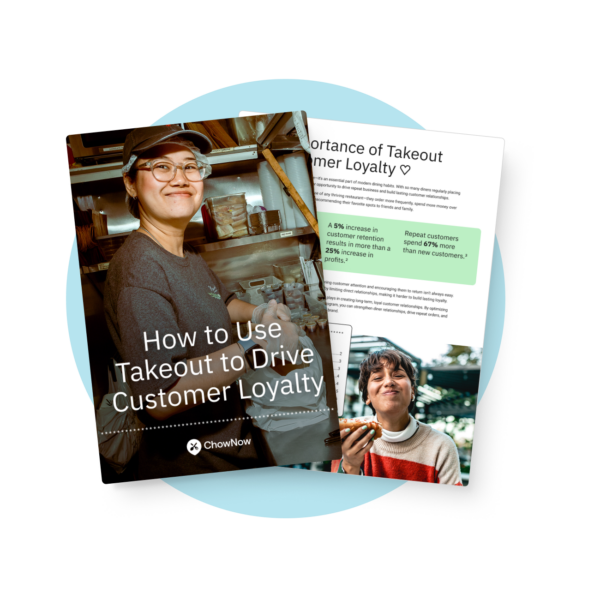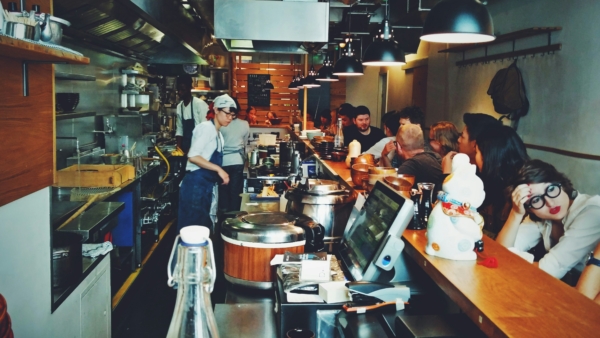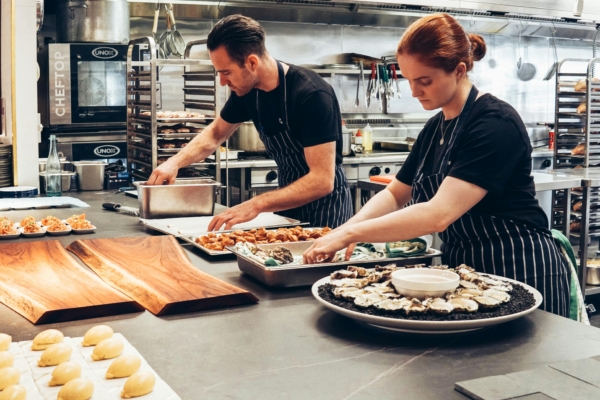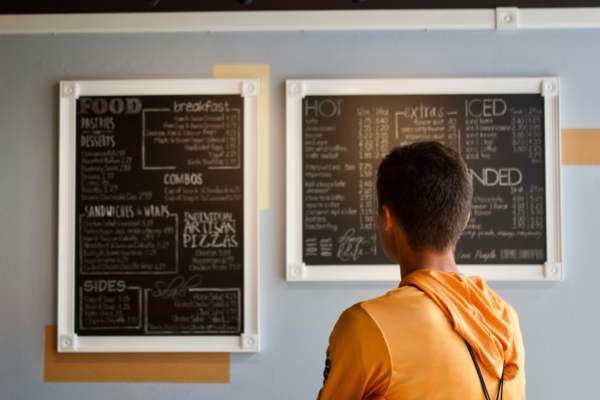Average Restaurant Profit Margins: What They Are And How to Improve Yours

When you decided to open a restaurant, you probably didn’t picture yourself glued to spreadsheets or tracking the price of eggs, but keeping an eye on the numbers is how you stay open year after year.
Those numbers, or KPIs, decide whether the lights stay on, the staff gets paid, and the dream stays alive.
The truth is that the average restaurant profit margin is razor-thin, leaving almost no room for error. A spike in food costs, a drop in sales volume, or one slow season can wipe out months of hard work.
If your restaurant profit margins aren’t healthy, it doesn’t matter how busy you are—you’ll always be playing catch-up.
In this article, you’ll learn:
- Why every operator has to monitor their restaurant profit margins
- Why it can be so challenging to increase your profit margins
- How to improve your margin numbers
Let’s dig into why margins, not just sales, make or break a restaurant business.
What Are Restaurant Profit Margins?
Restaurant profit margins are the percentage of your revenue that turns into actual profit after covering your expenses. They tell you how much money your restaurant keeps after paying for everything from food costs to labor expenses to utilities and rent.
There are two kinds of margins you need to know.
Gross Profit Margin
To get your gross profit margin, you subtract cost of goods sold (COGS) from your total sales and then divide that by your total sales.
That includes the ingredients and packaging for your menu items, but not things like rent and payroll. This gives you a sense of how effective your menu pricing is.
Net Profit Margin
Your net profit margin, on the other hand, is the big picture. It factors in all your operating expenses, like labor, rent, insurance, equipment repairs, marketing, and more.
This is the number that truly reflects your restaurant’s financial health.
For example:
Let’s say your restaurant made $100,000 in total sales last month.
Your cost of goods sold (ingredients, beverages, packaging, etc.) came to $35,000, and your operating expenses (labor, rent, insurance, etc.) added up to $60,000.
- Gross profit = $100,000 – $35,000 = $65,000
- Gross profit margin = $65,000 ÷ $100,000 = 65%
- Net profit = $100,000 – $35,000 – $60,000 = $5,000
- Net profit margin = $5,000 ÷ $100,000 = 5%
That 5%?
That’s what you actually take home.
You can pull in millions of dollars a year and still struggle to stay open if your costs are out of control.
That’s why restaurant profit margins are the true measure of your restaurant’s financial health.
Why Profit Margins Are So Important
There’s a trap that many operators fall into if they don’t pay attention to their spreadsheets: high total sales don’t automatically equal a healthy profit margin.
You can have packed tables, long lines, and strong menu item sales, but if your operating expenses are out of control, you still might be losing money.
Good profit margins are what allow you to reinvest in your team, upgrade equipment, expand your menu, or just take a breath between shifts.
They create room to handle unexpected costs, like a spike in food costs or a broken walk-in, without throwing your whole month off balance.
The reality is that most operators are working within razor-thin profit margins.
Full-service restaurants, fast-casual restaurants, and quick-service restaurants alike are all facing:
- Rising labor costs due to minimum wage increases and staffing shortages
- Climbing food costs caused by inflation and supply chain volatility
- Fixed overhead expenses like rent, insurance, and utilities that never seem to go down
Think of profit margins as your restaurant’s financial buffer. Without it, one bad month can wipe out three good ones.
To make sustainable changes, you need to first establish a strong starting point.
What’s the Average Profit Margin for a Restaurant?
So, how much profit does a typical restaurant actually make?
For most, the average restaurant profit margins fall between 3% to 5%, depending on the restaurant type and concept.
That means that for every $100 in total revenue, you’re keeping just $3 to $5 after covering all your restaurant costs.
Some well-run quick service restaurants can push it as high as 17%, while full service restaurants tend to sit on the lower end range of 4%-5% due to higher labor costs and more complex operations.
Why are restaurant profit margins so thin?
Because nearly every dollar is spoken for, and the costs associated with running a restaurant keep increasing.
From food costs and labor expenses to inflation and unpredictable sales volume, operating a restaurant business comes with constant, non-negotiable bills.
And, with such low margins, even minor problems or inefficiencies can eat into your restaurant profit quickly.
Factors that influence your profit margins
Several things determine how wide or narrow your restaurant profit margins can be:
- Location: Rent in a prime downtown spot can devour your net profit.
- Menu prices: Pricing too low shrinks margins; pricing too high can drive away guests.
- Concept and service model: A counter-service taco shop has a very different cost structure than a white-tablecloth steakhouse.
- Business model: Delivery-heavy brands reliant on third-party apps may see lower returns due to commissions.
- Restaurant type: Whether you run a fine dining, fast casual, or quick service concept plays a big role in potential margins.
There’s no one-size-fits-all number. But knowing where you stand and how you compare to the industry is the first step toward building stronger, more profitable margins.
What Makes It So Hard to Increase Profit Margins?
The core challenge of increasing your restaurant profit margins is that so many of your expenses are both essential and unpredictable.
Customers are price-sensitive
Raise your menu prices too much, and your loyal customers start to disappear. Keep them too low, and you’re losing your net profit margin every time someone orders.
Also, every guest has a smartphone in their pocket—thanks to online reviews and third-party apps, they have more options (and price comparisons) than ever before. Balancing perceived value with profitability is a constant dance.
Costs keep climbing
You’ve probably noticed:
- Food costs are volatile, driven by inflation, supply chain issues, and even climate change.
- Labor costs keep rising, especially in markets with mandatory wage hikes or staff shortages.
- Even non-negotiables like utilities and rent, your overhead expenses, never seem to go down.
Add in things like equipment repairs, licensing fees, and other expenses, and you’re constantly fighting to stay ahead of significant cost increases.
Operational inefficiencies eat away at margins
The more complex your concept or menu, the harder it is to control restaurant expenses. High staff turnover, inefficient workflows, and a lack of real-time data can silently destroy your bottom line.
You may have strong menu item sales, but if your food cost percentage or labor expenses are off, your margin can evaporate without you realizing it.
Delivery platforms take a big bite
Third-party delivery apps may boost sales volume, but they often charge commissions of 20%–30%. That’s a massive chunk of your restaurant profit margin, especially when you’re already operating on thin margins.
None of these problems are new, but as every part of running a restaurant becomes more expensive, solving them has never been more urgent.
How to Improve Your Restaurant’s Profit Margin
Here are five strategies to help you improve your restaurant profit margin without sacrificing the guest experience:
Control your costs of goods sold (COGS)
Your cost of goods sold, mostly food costs and beverages, is one of your biggest levers.
Tactics to try:
- Use a restaurant profit margin calculator weekly to spot changes in your food cost percentage.
- Engineer your menu items around high-margin ingredients and cross-utilize wherever possible.
- Reduce food waste by tightening portion control and tracking spoilage.
Small changes to how you purchase, prep, and portion can significantly increase your gross profit margin.
Get serious about labor costs
Your second biggest expense is payroll. Look for ways to lower labor costs without compromising service.
- Use scheduling software to match staffing with forecasted sales volume.
- Cross-train team members to handle multiple roles during slower shifts.
- Monitor labor expenses as a % of revenue weekly, not monthly.
Cutting labor too aggressively can hurt service, so focus on efficiency, not just hours.
Reduce reliance on third-party platforms
If third-party delivery fees are taking a bite out of your net profit, look for ways to shift customers toward direct online ordering through your own channels.
This keeps your gross profit margin higher and gives you more control over the guest experience.
Use data to guide your decisions
Guesswork and gut instincts are not a legitimate strategy when making decisions for your restaurant.
Use a restaurant profit margin calculator, POS reports, and your analytics to see exactly where your money is going.
Modern POS and inventory systems can help you:
- Track best- and worst-performing menu items
- Understand peak hours for optimized staffing
- Forecast inventory needs to avoid waste and missed sales
Restaurant technology doesn’t just save time, it saves money.
Drive more direct orders
Make it easy for customers to order straight from your website or mobile app. Promote it in-store, on social, and in your packaging.
An enticing loyalty program can encourage repeat visits and keep your loyal customers coming back without paying high commission fees.
You don’t need to overhaul your entire restaurant operation—just focus on doing the fundamentals better. Over time, these changes can lead to significantly higher profit margins and a healthier bottom line.
Margins Are a Moving Target
What worked last quarter might not work next month; that’s just the reality of the restaurant industry.
Staying profitable means treating your restaurant profit margins like a living number: track them, tweak them, and keep adjusting as your business evolves.
Contact ChowNow to learn how you can use Centralized Reporting tools to spot issues early and make smarter decisions with confidence.






